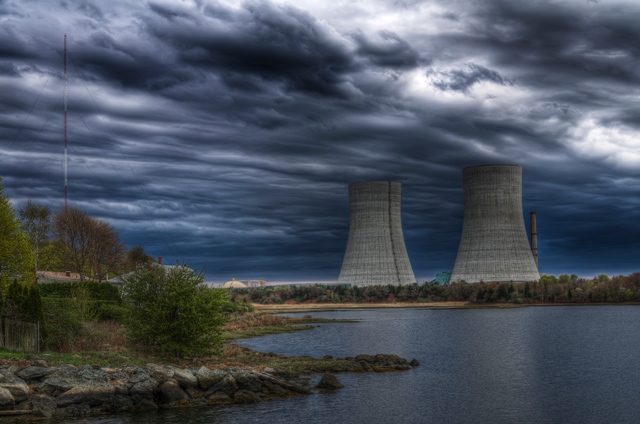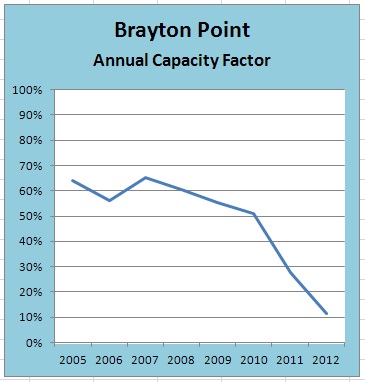Storm Clouds Gather Over Brayton Point
Dec 14, 2012 by Caitlin Peale

Frank C. Grace, www.trigphotography.com
Coal-fired power is dying, not only across the nation, but across New England as well. The region’s coal-fired power plant fleet has started to succumb to the costs of operating a coal-fired dinosaur in the age of energy efficiency, growing renewable electricity generation, and–for now–low natural gas prices.
Predominantly coal-fired Brayton Point Station in Somerset, Massachusetts, is the state’s largest single source of carbon emissions (producing over 6 million tons in 2010). Another harmful pollutant emitted by Brayton Point is particulate matter, which is measured daily by monitors that continuously check the opacity of the soot coming out of the plant’s smokestack. Brayton has been violating their limits for emitting that soot, and failing to monitor their emissions of several other harmful pollutants.
Yesterday, CLF filed a notice of intent to sue Brayton’s current owners, Dominion Resources, for those violations. CLF’s upcoming lawsuit is just the latest in a growing list of bad news for Dominion and Brayton Point.
As New England’s other coal plants started to close or teeter on the edge of closure, Brayton Point Station was expected to be the last coal plant standing in the region. It is New England’s largest coal-fired power plant, and in the past decade its current owners, Dominion Resources, sank over $1 billion in pollution control upgrades into the behemoth. While Brayton Point does not have the kind of legal protection from market realities that PSNH exploits to prop up its dirty old coal generation in New Hampshire, many had assumed that Brayton Point was well-positioned to survive in the changing power generation landscape.
But the relentless pressure of low natural gas prices and the costs of starting up and operating an enormous coal-fired power plant have begun to affect every corner of the coal generation market in New England, and Brayton Point has not been spared. The plant’s “capacity factor,” which reflects the amount of power the plant generated compared to the amount of power it could have generated if used to its full potential, has taken a nosedive over the past three years. A plummeting capacity factor means that it is a better economic choice for a plant’s owners to keep it idle most of the time than to operate.
Dominion Resources, clearly, has seen the writing on the wall for coal in New England. After signing a binding agreement to cease coal operations at Salem Harbor Station as a result of CLF’s lawsuit against that plant, Dominion sold the Salem plant earlier this year. Following closely on the heels of the Salem sale, the company put Brayton Point on the market in September. While Dominion is marketing Brayton as a modern coal-fired power plant due to its recent billion-dollar pollution control investments, UBS recently assessed [PDF] the value of those investments (and the plant itself) at zero.
Brayton Point’s plummeting capacity factor and bleak sale prospects reflect both the current power of low natural gas prices and the weakness of these old, out-dated coal plants. That trend will continue as the New England energy market continues to move forward with better integration of efficiency, conservation and renewable generation. Dark clouds are rising over Brayton Point. In the meantime, CLF and our partners will work diligently to hold the Brayton Point power plant accountable for producing its own dark clouds of pollution in violation of the law.
http://www.clf.org/blog/clean-energy-climate-change/storm-clouds-gather-over-brayton-point/

No comments:
Post a Comment